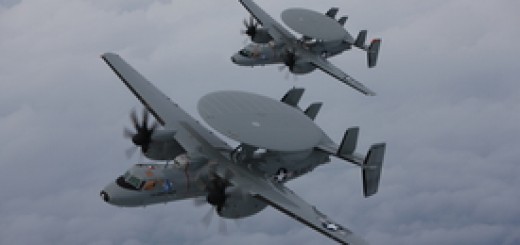Dutch defense industry secures key role in Airbus H225M Caracal helicopter program
{loadposition bannertop}
{loadposition sidebarpub}
GKN Aerospace confirmed a new memorandum of understanding with Airbus Helicopters in Toulouse, marking Dutch industrial participation in the H225M Caracal program. The deal links the Netherlands’ H225M acquisition to homegrown jobs, technology transfer, and long-term sustainment capability.
GKN Aerospace announced on October 8, 2025, that GKN Fokker and Airbus Helicopters have signed a new memorandum of understanding in Toulouse during the Royal Visit of King Willem-Alexander and Queen Máxima, formalizing Dutch industrial participation on the H225M Caracal program. The MoU focuses on electrical wiring interconnection systems and advanced composite technologies for the H225M, building on a 2023 framework and following the Netherlands’ decision to procure 12 aircraft for the Royal Netherlands Air Force. For The Hague, it is a timely bridge from contract to cockpit, translating a headline order into jobs, technology transfer, and predictable supply-chain workshare tied to a frontline military helicopter.Follow Army Recognition on Google News at this link
The Airbus H225M Caracal is a long-range, twin-engine multirole helicopter capable of carrying up to 31 troops or 4,750 kg of cargo, featuring advanced avionics, self-sealing fuel tanks, and modular armament options for special operations, search and rescue, and maritime missions (Picture source: DGA).
At the center of the agreement is EWIS, the vascular system of a modern rotorcraft. GKN Fokker’s Dutch sites have long specialized in high-reliability harnesses, looms, and aerospace cabling, and the company publicly positions itself as a market leader for both commercial and military platforms. Localizing H225M wiring packages in Papendrecht and leveraging the Global Technology Centre in Hoogeveen for composite maturation gives the Netherlands an industrial foothold that extends well beyond final assembly and spares.
The H225M fields twin Safran Makila 2A1 engines, an 11,000-kilogram maximum takeoff weight, and a 4,750 kilogram cargo-sling rating. It cruises efficiently at about 262 kilometers per hour, stretches to 920 kilometers on standard tanks and up to 1,253 kilometers with auxiliaries, and can seat up to 31 troops depending on configuration. Those figures matter in Dutch service, where long overwater legs, rapid role changes, and interoperability with NATO partners define daily operations.
Survivability and missionization options are equally central. The H225M is delivered with crashworthy, self-sealing fuel tanks and a digital glass cockpit, and it can be configured with Airbus’s HForce weapons architecture for door guns, rocket pods, and guided munitions. In export service, the type has demonstrated integration of Exocet anti-ship missiles and MU90 torpedoes, underscoring a broad armament envelope that can be tailored to national doctrine. While the Dutch package has not been detailed publicly, a special operations profile typically emphasizes fast-rope kits, EO/IR sensors, secure communications, defensive aids, and door-mounted machine guns for escort and suppression.
Wiring and composite maturity correlate directly with mean time between failures, corrosion resistance in maritime climates, and ease of battle damage repair. For the Royal Netherlands Air Force, which will replace aging AS532 Cougars, the H225M brings longer range, higher payload, and better endurance for special operations insertion, combat search and rescue, and ship-to-shore lift. The original 2024 contract, signed at Euronaval, included initial support and services, indicating a lifecycle approach from day one. The industrial tie-up should shorten feedback loops between fleet maintainers and Dutch suppliers, a quiet but powerful driver of sortie generation.
European rotorcraft programs are consolidating around deeper cross-border supply chains, from NH90 upgrades managed by NHIndustries to national recapitalizations like the Dutch H225M buy. GKN Fokker is a shareholder in NHIndustries alongside Airbus and Leonardo, and NATO customers recently funded a major NH90 modernization, part of a broader push to raise readiness and extend service lives. Against that backdrop, anchoring H225M EWIS and composite work in the Netherlands serves both industrial resilience and EU strategic autonomy, while aligning with NATO’s drive for interoperable vertical-lift fleets.

{loadposition bannertop}
{loadposition sidebarpub}
GKN Aerospace confirmed a new memorandum of understanding with Airbus Helicopters in Toulouse, marking Dutch industrial participation in the H225M Caracal program. The deal links the Netherlands’ H225M acquisition to homegrown jobs, technology transfer, and long-term sustainment capability.
GKN Aerospace announced on October 8, 2025, that GKN Fokker and Airbus Helicopters have signed a new memorandum of understanding in Toulouse during the Royal Visit of King Willem-Alexander and Queen Máxima, formalizing Dutch industrial participation on the H225M Caracal program. The MoU focuses on electrical wiring interconnection systems and advanced composite technologies for the H225M, building on a 2023 framework and following the Netherlands’ decision to procure 12 aircraft for the Royal Netherlands Air Force. For The Hague, it is a timely bridge from contract to cockpit, translating a headline order into jobs, technology transfer, and predictable supply-chain workshare tied to a frontline military helicopter.
Follow Army Recognition on Google News at this link
The Airbus H225M Caracal is a long-range, twin-engine multirole helicopter capable of carrying up to 31 troops or 4,750 kg of cargo, featuring advanced avionics, self-sealing fuel tanks, and modular armament options for special operations, search and rescue, and maritime missions (Picture source: DGA).
At the center of the agreement is EWIS, the vascular system of a modern rotorcraft. GKN Fokker’s Dutch sites have long specialized in high-reliability harnesses, looms, and aerospace cabling, and the company publicly positions itself as a market leader for both commercial and military platforms. Localizing H225M wiring packages in Papendrecht and leveraging the Global Technology Centre in Hoogeveen for composite maturation gives the Netherlands an industrial foothold that extends well beyond final assembly and spares.
The H225M fields twin Safran Makila 2A1 engines, an 11,000-kilogram maximum takeoff weight, and a 4,750 kilogram cargo-sling rating. It cruises efficiently at about 262 kilometers per hour, stretches to 920 kilometers on standard tanks and up to 1,253 kilometers with auxiliaries, and can seat up to 31 troops depending on configuration. Those figures matter in Dutch service, where long overwater legs, rapid role changes, and interoperability with NATO partners define daily operations.
Survivability and missionization options are equally central. The H225M is delivered with crashworthy, self-sealing fuel tanks and a digital glass cockpit, and it can be configured with Airbus’s HForce weapons architecture for door guns, rocket pods, and guided munitions. In export service, the type has demonstrated integration of Exocet anti-ship missiles and MU90 torpedoes, underscoring a broad armament envelope that can be tailored to national doctrine. While the Dutch package has not been detailed publicly, a special operations profile typically emphasizes fast-rope kits, EO/IR sensors, secure communications, defensive aids, and door-mounted machine guns for escort and suppression.
Wiring and composite maturity correlate directly with mean time between failures, corrosion resistance in maritime climates, and ease of battle damage repair. For the Royal Netherlands Air Force, which will replace aging AS532 Cougars, the H225M brings longer range, higher payload, and better endurance for special operations insertion, combat search and rescue, and ship-to-shore lift. The original 2024 contract, signed at Euronaval, included initial support and services, indicating a lifecycle approach from day one. The industrial tie-up should shorten feedback loops between fleet maintainers and Dutch suppliers, a quiet but powerful driver of sortie generation.
European rotorcraft programs are consolidating around deeper cross-border supply chains, from NH90 upgrades managed by NHIndustries to national recapitalizations like the Dutch H225M buy. GKN Fokker is a shareholder in NHIndustries alongside Airbus and Leonardo, and NATO customers recently funded a major NH90 modernization, part of a broader push to raise readiness and extend service lives. Against that backdrop, anchoring H225M EWIS and composite work in the Netherlands serves both industrial resilience and EU strategic autonomy, while aligning with NATO’s drive for interoperable vertical-lift fleets.






